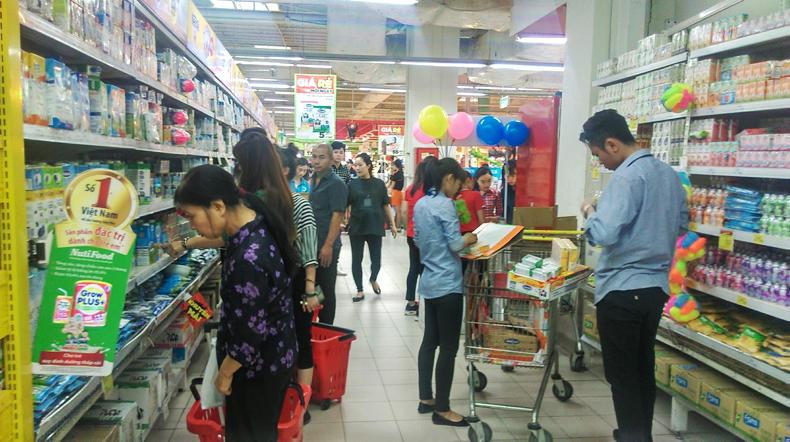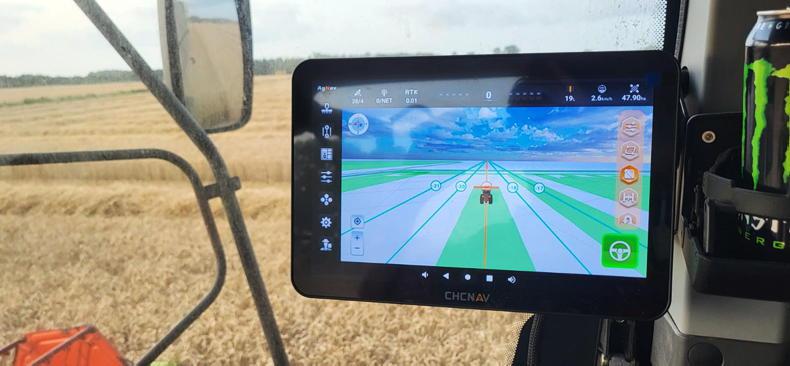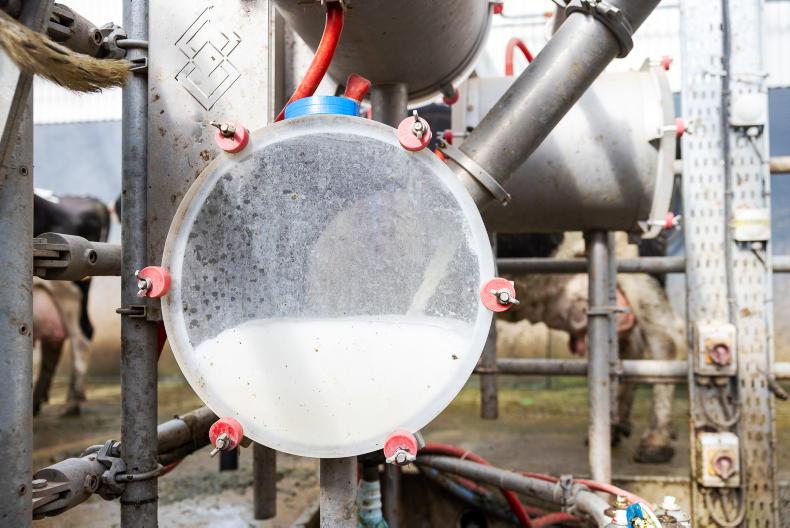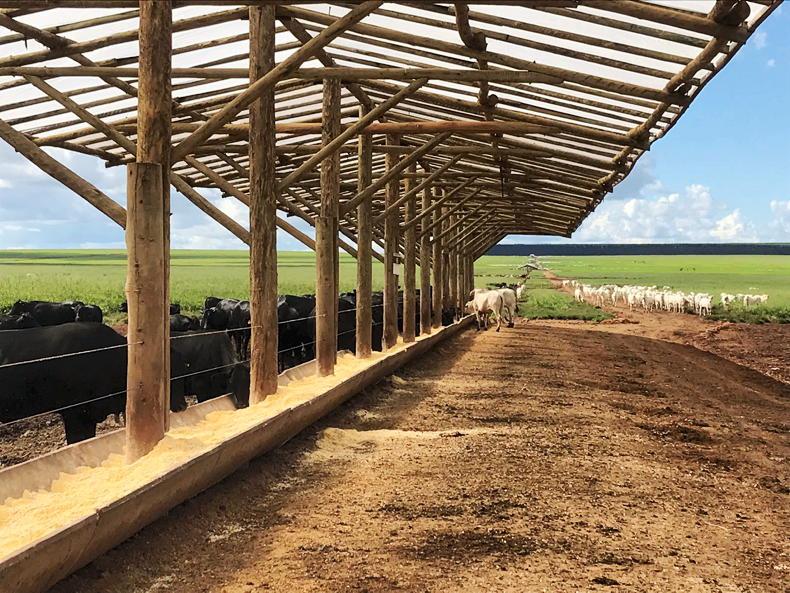In one of Vietnam’s largest supermarkets in Hanoi, an entire aisle is dedicated to a selection of 200ml cartons of UHT milk for children.
It is thronged with parents, many of whom would have never consumed milk as children. However, a combination of western influence, higher spending power and health-conscious consumers is driving dairy demand in the country.
 Indeed, the government is backing dairy, too, with a school milk programme in line with a €262m initiative, which aims to increase the national average height for the new generation by 3cm to 167cm (5ft 6in) for men and 156cm (5ft 1in) for women by 2020.
Indeed, the government is backing dairy, too, with a school milk programme in line with a €262m initiative, which aims to increase the national average height for the new generation by 3cm to 167cm (5ft 6in) for men and 156cm (5ft 1in) for women by 2020.
Despite the ageing demographics and a two-child policy imposed by the Communist government, approximately 24% of the 95m strong population is under the age of 14, presenting the biggest opportunity for the dairy industry.
John Marron, chair of the Irish Business Association, who is originally from Monaghan but has lived in Ho Chi Minh City for 14 years, has noticed a shift in tastes in Vietnam.

“The middle class in the urban areas, like Hanoi, Saigon (Ho Chi Minh city) and Da Nang, are more cosmopolitan in their eating habits,” he said. “The majority of Vietnamese are still at a much lower income level and will not be able to afford imported products, but relative to other Asian countries the familiarity of dairy products is (high). The government is promoting it over the last decade.”
In middle-class families, children are the top priority. “The kids are adored and everyone wants their kid to be a winner. That is for sure,” he said.
Listen to "Irish dairy in Vietnam" on Spreaker.
John sees potential for Irish dairy in Vietnam.
“Even though it is often confused with Iceland, Ireland comparatively has a very high profile. The advantage is, with Origin Green and the whole green image, in their psyche it’s seen as organic. There is a great opportunity there because there is an association with Irish being clean and fresh,” he said.
Ireland
In 2014, Kerry Group signed a €100m contract to supply milk powder to Anova Corporation, a Vietnamese veterinary and animal health company which is now branching into the food industry – and was the very first private company registered in the country in the nineties.
 The resulting product, Anka infant formula, sells at a premium and is available in 40 shops in Ho Chi Minh retailing for around €20 for 1kg. It also recently launched Anka Peak Fresh, a UHT milk produced using milk supplied by Glanbia. It is a small portion of the market, compared with the dominance of imported products, and domestic players such as Vinamilk.
The resulting product, Anka infant formula, sells at a premium and is available in 40 shops in Ho Chi Minh retailing for around €20 for 1kg. It also recently launched Anka Peak Fresh, a UHT milk produced using milk supplied by Glanbia. It is a small portion of the market, compared with the dominance of imported products, and domestic players such as Vinamilk.
The company’s chair, Nguyen Hieu Liem (pictured below), said that high-end and middle-class consumers in Vietnam are concerned about quality and safety standards for products consumed by their children.
“The baby is very important to them. They want to pick the best and they are willing to pay more for a good product,” he said. “Ireland is green and clean.
 “Living standards are increasing. They have more to spend on dairy. It is good for the health of the children. So now the children drink more milk. (They will) pay more money for the children to drink milk to be taller and more intelligent.”
“Living standards are increasing. They have more to spend on dairy. It is good for the health of the children. So now the children drink more milk. (They will) pay more money for the children to drink milk to be taller and more intelligent.”
However, an issue that Anova has encountered is high tariffs to import dairy products with added sugar, which is unusual in Ireland but expected in Vietnam.
“If we import UHT milk with sugar, there is a 30% tax. If I import from Australia, there is no tax. How can I compete?” Liem said.
The Vietnamese do not know much about Ireland. We have to share the story
Vietnam currently imports almost €1bn worth of dairy products from New Zealand, the US, Australia, the Netherlands and Singapore. How familiar is the Vietnamese consumer with Ireland?
“The knowledge of Ireland is low. Previously, there were no Irish products in Vietnam. So the Vietnamese do not know much about Ireland. We have to share the story,” said Liem.
“We must spend a lot of money on marketing. They know America, Australia and New Zealand, but they do not know Ireland. We must push it,” he added, who argues that Ireland should do more to promote the country in Vietnam.
“If we want to increase our volume, first of all the Irish Government should help the Vietnamese to know more about Ireland. The Vietnamese should see more of Ireland on TV – they should see the Origin Green ad. If that happens, the potential is good,” Liem concluded.
This article has been supported by the Simon Cumbers Media FundPopulation: 95,261,021.Capital city: Hanoi. Official language: Vietnamese. Currency: Vietnamese Dong, €1 = 25,000 dong.Area: 331,210 sq km.Agricultural land: 34.8%.Rural population: 91.8%.Average age: 30 years.Life expectancy: 73.4 years.23.84% is under the age of 14. Literacy: 94.5%.Average annual income: €5,830.17% of GDP is generated through agriculture 11.3% of the population is living in poverty.
 This article has been supported by the Simon Cumbers Media Fund.
This article has been supported by the Simon Cumbers Media Fund.
In one of Vietnam’s largest supermarkets in Hanoi, an entire aisle is dedicated to a selection of 200ml cartons of UHT milk for children.
It is thronged with parents, many of whom would have never consumed milk as children. However, a combination of western influence, higher spending power and health-conscious consumers is driving dairy demand in the country.
 Indeed, the government is backing dairy, too, with a school milk programme in line with a €262m initiative, which aims to increase the national average height for the new generation by 3cm to 167cm (5ft 6in) for men and 156cm (5ft 1in) for women by 2020.
Indeed, the government is backing dairy, too, with a school milk programme in line with a €262m initiative, which aims to increase the national average height for the new generation by 3cm to 167cm (5ft 6in) for men and 156cm (5ft 1in) for women by 2020.
Despite the ageing demographics and a two-child policy imposed by the Communist government, approximately 24% of the 95m strong population is under the age of 14, presenting the biggest opportunity for the dairy industry.
John Marron, chair of the Irish Business Association, who is originally from Monaghan but has lived in Ho Chi Minh City for 14 years, has noticed a shift in tastes in Vietnam.

“The middle class in the urban areas, like Hanoi, Saigon (Ho Chi Minh city) and Da Nang, are more cosmopolitan in their eating habits,” he said. “The majority of Vietnamese are still at a much lower income level and will not be able to afford imported products, but relative to other Asian countries the familiarity of dairy products is (high). The government is promoting it over the last decade.”
In middle-class families, children are the top priority. “The kids are adored and everyone wants their kid to be a winner. That is for sure,” he said.
Listen to "Irish dairy in Vietnam" on Spreaker.
John sees potential for Irish dairy in Vietnam.
“Even though it is often confused with Iceland, Ireland comparatively has a very high profile. The advantage is, with Origin Green and the whole green image, in their psyche it’s seen as organic. There is a great opportunity there because there is an association with Irish being clean and fresh,” he said.
Ireland
In 2014, Kerry Group signed a €100m contract to supply milk powder to Anova Corporation, a Vietnamese veterinary and animal health company which is now branching into the food industry – and was the very first private company registered in the country in the nineties.
 The resulting product, Anka infant formula, sells at a premium and is available in 40 shops in Ho Chi Minh retailing for around €20 for 1kg. It also recently launched Anka Peak Fresh, a UHT milk produced using milk supplied by Glanbia. It is a small portion of the market, compared with the dominance of imported products, and domestic players such as Vinamilk.
The resulting product, Anka infant formula, sells at a premium and is available in 40 shops in Ho Chi Minh retailing for around €20 for 1kg. It also recently launched Anka Peak Fresh, a UHT milk produced using milk supplied by Glanbia. It is a small portion of the market, compared with the dominance of imported products, and domestic players such as Vinamilk.
The company’s chair, Nguyen Hieu Liem (pictured below), said that high-end and middle-class consumers in Vietnam are concerned about quality and safety standards for products consumed by their children.
“The baby is very important to them. They want to pick the best and they are willing to pay more for a good product,” he said. “Ireland is green and clean.
 “Living standards are increasing. They have more to spend on dairy. It is good for the health of the children. So now the children drink more milk. (They will) pay more money for the children to drink milk to be taller and more intelligent.”
“Living standards are increasing. They have more to spend on dairy. It is good for the health of the children. So now the children drink more milk. (They will) pay more money for the children to drink milk to be taller and more intelligent.”
However, an issue that Anova has encountered is high tariffs to import dairy products with added sugar, which is unusual in Ireland but expected in Vietnam.
“If we import UHT milk with sugar, there is a 30% tax. If I import from Australia, there is no tax. How can I compete?” Liem said.
The Vietnamese do not know much about Ireland. We have to share the story
Vietnam currently imports almost €1bn worth of dairy products from New Zealand, the US, Australia, the Netherlands and Singapore. How familiar is the Vietnamese consumer with Ireland?
“The knowledge of Ireland is low. Previously, there were no Irish products in Vietnam. So the Vietnamese do not know much about Ireland. We have to share the story,” said Liem.
“We must spend a lot of money on marketing. They know America, Australia and New Zealand, but they do not know Ireland. We must push it,” he added, who argues that Ireland should do more to promote the country in Vietnam.
“If we want to increase our volume, first of all the Irish Government should help the Vietnamese to know more about Ireland. The Vietnamese should see more of Ireland on TV – they should see the Origin Green ad. If that happens, the potential is good,” Liem concluded.
This article has been supported by the Simon Cumbers Media FundPopulation: 95,261,021.Capital city: Hanoi. Official language: Vietnamese. Currency: Vietnamese Dong, €1 = 25,000 dong.Area: 331,210 sq km.Agricultural land: 34.8%.Rural population: 91.8%.Average age: 30 years.Life expectancy: 73.4 years.23.84% is under the age of 14. Literacy: 94.5%.Average annual income: €5,830.17% of GDP is generated through agriculture 11.3% of the population is living in poverty.
 This article has been supported by the Simon Cumbers Media Fund.
This article has been supported by the Simon Cumbers Media Fund.
 Indeed, the government is backing dairy, too, with a school milk programme in line with a €262m initiative, which aims to increase the national average height for the new generation by 3cm to 167cm (5ft 6in) for men and 156cm (5ft 1in) for women by 2020.
Indeed, the government is backing dairy, too, with a school milk programme in line with a €262m initiative, which aims to increase the national average height for the new generation by 3cm to 167cm (5ft 6in) for men and 156cm (5ft 1in) for women by 2020.
 The resulting product, Anka infant formula, sells at a premium and is available in 40 shops in Ho Chi Minh retailing for around €20 for 1kg. It also recently launched Anka Peak Fresh, a UHT milk produced using milk supplied by Glanbia. It is a small portion of the market, compared with the dominance of imported products, and domestic players such as Vinamilk.
The resulting product, Anka infant formula, sells at a premium and is available in 40 shops in Ho Chi Minh retailing for around €20 for 1kg. It also recently launched Anka Peak Fresh, a UHT milk produced using milk supplied by Glanbia. It is a small portion of the market, compared with the dominance of imported products, and domestic players such as Vinamilk.  “Living standards are increasing. They have more to spend on dairy. It is good for the health of the children. So now the children drink more milk. (They will) pay more money for the children to drink milk to be taller and more intelligent.”
“Living standards are increasing. They have more to spend on dairy. It is good for the health of the children. So now the children drink more milk. (They will) pay more money for the children to drink milk to be taller and more intelligent.”
 This article has been supported by the Simon Cumbers Media Fund.
This article has been supported by the Simon Cumbers Media Fund. 



















SHARING OPTIONS